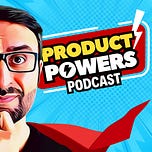Liberating Structures Facilitation Tools for Better Meetings
Are you a facilitator? Bringing out the best ideas in a group is tough, especially when we are still using outdated facilitation techniques. I can relate to this. I used to be a "professional introvert," dreading having to speak up in front of a room full of people. But what if there was a way to unlock the potential of every voice in the room—even the quiet ones?
I had the pleasure of interviewing Keith McCandless, one of the co-authors of The Power of Liberating Structures. In this post, I’ve summarised some of the key Liberating Structures techniques that we discussed in the episode.
🌟 Why Traditional Meetings Fail Most of Us
Most traditional meeting formats—presentations, brainstorming sessions, or open discussions aren’t designed to be democratic. They’re either over-controlled by a single leader or too loose, leaving quieter participants struggling to be heard.
The Problem
Dominant voices often steal the spotlight.
"Open discussions" turn into unproductive dialogues.
Meetings rarely tap into the group’s full creative potential.
The quieter someone is, the more likely their ideas aren’t heard. The irony? These are often the most innovative thinkers.
🎯 What Are Liberating Structures?
Liberating Structures are a collection of facilitation techniques that balance structure and freedom. Unlike rigid formats, they enable everyone in a group to contribute in a meaningful way. Instead of controlling the conversation, they distribute control in a way that sparks creativity and collaboration. The aim? To make every voice count.
Keith McCandless, co-author of The Surprising Power of Liberating Structures, describes them as:
Tools to build a “collaborative muscle.”
This concept suggests that teams can work at peak intelligence and creativity consistently—not just once in a while.
What Makes Them Different?
Simple Rules, Big Results: Clear, yet minimal guidelines create space for innovation.
Quick to Implement: Some techniques take just a few minutes but deliver immediate value.
Applicable Anywhere: From boardrooms to workshops, anyone can use them.
If you’re looking to transform the way you handle meetings or workshops, these techniques are a game-changer.
🧰 Top 5 Liberating Structures to Try
Here are five techniques to revolutionise how you facilitate your next meeting or workshop:
1️⃣ One, Two, Four, All
This technique brings inclusivity to the forefront. Whether you're tackling a team challenge or brainstorming ideas, this structure ensures that every voice is heard.
Steps to Use It:
Individual Thinking (1 Minute): Each person reflects silently, jotting down their thoughts.
Pair Discussion (2 Minutes): Discuss those ideas with a partner.
Small Group Chat (4 Minutes): Groups of four share insights and connections.
All-Group Sharing (5 Minutes): Highlight only the most compelling ideas to share with everyone.
Why It Works:
Rapid timing sparks creativity and prevents overthinking.
Introverts and extroverts alike contribute on equal footing.
Pro Tip: Stick to the timing—it’s key to keeping the energy high.
2️⃣ Critical Uncertainties
When facing unpredictable challenges, this structure is a lifesaver. Think of it as a way to develop flexible strategies for various future scenarios.
How It’s Done:
Identify two key uncertainties affecting your situation.
Map out possible futures by combining these uncertainties.
For each scenario, brainstorm strategies to thrive in those conditions.
For example, college students might explore scenarios around meaningful work versus meaningless work and whether they can afford to live independently. This helps them prepare for any outcome.
3️⃣ Spiral Journal
Perfect for starting a meeting or workshop, this tool promotes reflection. It sets a calm, focused tone, helping participants align with their goals before diving into work.
When to Use It:
Starting a planning session.
Onboarding a new team.
This is especially effective online, where distractions run high.
4️⃣ Grief Walking
Transitions and losses—whether personal or organisational—affect everyone, yet they’re rarely discussed openly. This approach provides structured space to share emotions and seek support.
Can it work in meetings? Absolutely. Whether your team is handling a difficult change or reflecting on lessons from a failed project, this structure respects the emotional side of work.
5️⃣ Talking with Pixies
This one’s a bit whimsical but deeply impactful. It helps people assess their personal commitments, weighing what’s worth holding on to and what must be let go.
How It Works:
Participants share a crossroads they’re facing.
Two "pixies" (people) provide opposing insights—one encouraging the status quo, the other advocating for change.
It’s a fun yet profound way to explore resistance to change and discover new paths forward.
💼 Why Tech Professionals Should Care
Traditional meeting formats often kill creativity before it even starts. Liberating Structures break down these barriers, making them ideal for Agile teams, product managers, or anyone navigating complex problem-solving.
Hypothetical Example: Sprint Retrospective
Instead of a standard retrospective, try replacing it with:
One, Two, Four, All to gather team insights.
Critical Uncertainties to identify risks for upcoming sprints.
Grief Walking to address unresolved frustrations.
This blend not only delivers practical solutions but also builds trust within the team.
🔬 Research on Group Collaboration
Studies consistently show that diverse groups perform better when every member contributes. For example, a research paper by Hackman in Harvard Business Review highlighted:
Groups with inclusive discussions solve problems 60% more effectively.
Cross-functional teams saw 30% higher creativity scores when guided conversations were used.
Liberating Structures offers practical ways to implement this science.
📚 Further Learning
Want to explore facilitation deeper? Check out these books:
The Surprising Power of Liberating Structures by Keith McCandless & Henri Lipmanowicz
Facilitator’s Guide to Participatory Decision-Making by Sam Kaner
Agile Retrospectives: Making Good Teams Great by Esther Derby & Diana Larsen
🚀 Next Steps
If you’re eager to improve your facilitation skills, start small. Try one of the structures above in your next meeting and observe how it transforms the dynamics. For even more inspiration, check out Facilitation Makes Workshops Work.
Remember: Meetings should never feel like a chore. With the right tools, they can be spaces where creativity and collaboration thrive. Liberating Structures are an accessible way to make that happen.
Guest: Keith McCandless
Keith is co-developer of Liberating Structures and co-author of the book The Surprising Power of Liberating Structures – Simple Rules to Unleash a Culture of Innovation (2014). Keith operates a global consulting practice focused on strategy development, creative adaptability, and including all voices in shaping next steps. He calls himself a structured improvisationalist.
Born in Cincinnati Ohio, he holds a Masters in Management from Brandeis University in Boston and a BA from The Evergreen State College in Olympia, Washington. Keith lives in Seattle with his wife, Anne, and Deacon, a whippet with talent to amuse. More about Keith.
Featured articles:
https://keithmccandless.medium.com
Titles include: Strategy Knotworking; Principles for a World Welcoming All Voices; More Magic, Less Mystery; and, LS: Change Methods for Everybody Every Day; The Deliberate Irony of Liberating Structures











